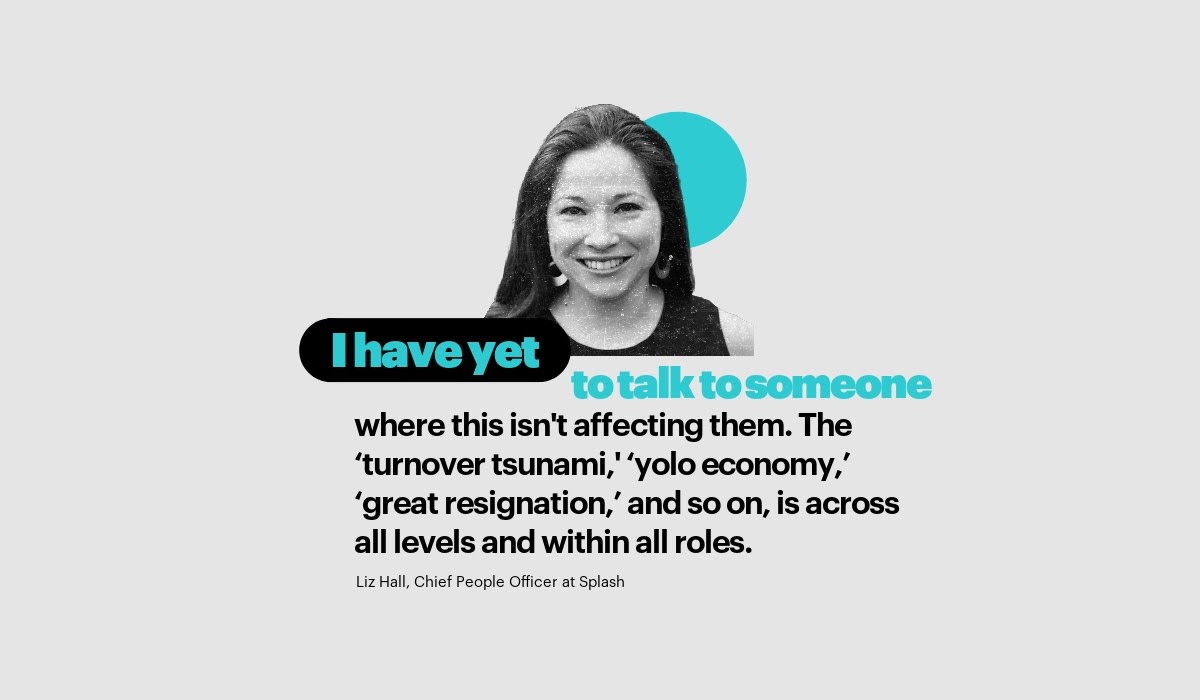The Big Quit: Who’s Leaving and Where Are They Going?
The Big Quit is in full effect with 95% of employees considering leaving their organizations. But the question remains: Where are they going?

By now we’ve heard of the resignation wave, the mass exodus of employees in all industries and the numbers are alarming—four million Americans have quit since April; 68% say they’ll leave if they have to return to the office; and three million women have already left because they simply can’t “do it all.” So who’s leaving? Where are they going? Which organizations are likely to be the hardest hit? Here we take a look at the issue and implications for employers of all types and sizes.
Dire predictions of a mass exodus
In June, the Society for Human Resource Management (SHRM) was one major organization that began to sound the alarm for what they called “the great resignation wave.” They point to research from Ipsos on behalf of Eagle Hill from November 2020 which indicated that “about one in four U.S. employees plan to leave their employer as the COVID-19 pandemic subsides.” And it’s turning out that the predictions are proving correct with:
52% of 2000 employees surveyed in the US and Canada indicate they plan to look for a new job this year—up 35% from last year
PwC, the second largest professional services organization in the world surveyed 1515 U.S.-based adults in March and found that demand for flexibility, adaptability, and paid time off were high on the list of employee demands and, if unable to get what they needed from current employers, were willing to leave to look for opportunities elsewhere
A Monster poll of 649 employed workers indicated that 95% of currently employed workers are considering new jobs, and a whopping 92% say they’re willing to switch industries to land a position with another firm (take this one with a grain of salt, though, a job posting site would love this level of resignation, right?)
And, of course, some companies are at risk due to how they handled—or mishandled—the pandemic.
Roberta Matuson, president of Matuson Consulting and the author of six books on talent and leadership, says: “Workers are still resentful that some companies never stayed in touch while they were on furlough.” That’s a critical oversight that, in hindsight, seems obviously ill-advised.
Which industries are hit hardest by the Big Quit?
No organizations are safe from the risk of employee loss, says Liz Hall, Chief People Officer at Splash, an event marketing platform. “I have yet to talk to someone where this isn’t affecting them,” she explains. “The ‘turnover tsunami,’ ‘yolo economy,’ ‘great resignation,’ and so on, is across all levels and within all roles. It is not targeted to a specific department.”

This turnover, says Hall, is a direct result of experiences in 2020. As many employees shifted to remote work environments, and spending more time in home settings with their families and pets, they got a taste for flexibility that many are loath to give up.
“Employees are leaving to turn their hobby into a business. Employees are leaving because they want the opposite of what their company has decided for staying remote or making them go into an office,” Hall continues, listing all the reasons why people are leaving their jobs. “They’re leaving because the market is so inflated that compensation in job offers are in the 90th percentile when the median is usually 50-75%.” Titles, she adds, are also being inflated to recruit and close roles.
In June The Washington Post reported that, according to the Bureau of Labor Statistics, about four million people quit their jobs in April—the highest quit level since the agency began collecting this data in 2000. The industries most at risk, they say, are those in retail, closely followed by professional and business services.
Women are quitting at record rates
Women are most likely to leave according to sources including CBS News which reports that almost three million women in the US have dropped out of the workforce over the past year. Recent Visier research on employee resignation trends indicated an increase in female resignation rates year over year for the past three years—the majority likely due to “the staggering amount of women who left the workforce as the pandemic took form.” Considering the impact that school cancellations and daycare center shutdowns had on families over that past year and more and this isn’t hard to understand.
As women continue to be primary caretakers and, during the pandemic, also teachers, work/home demands have led to tough decisions. Home commitments have driven much of the outflow of women from the workforce as they find themselves becoming full-time, at-home caretakers. According to a Gallup analysis, significantly more out-of-work mothers than out-of-work fathers say they stopped working due to childcare demands stemming from school closures.
Who’s resigning more: Gen X or Gen Z?
Members of Gen Z also represent a significant flight risk, says Dr. Santor Nishizaki, founder and CEO of Mulholland Consulting Group, LLC. After having discussions with Gen Z undergraduate university students, Nishizaki launched a study to determine what their workplace preferences are and how to best recruit, retain and lead this generation. His findings indicate that:
69% of Gen Z would like to work remotely at least 50% of the time
78% of Gen Z would consider moving out of state if employers would allow 100% remote work
It’s a generation that values flexibility; now that they’ve had a taste of that flexibility many will be averse to the restrictions that employers might place on them in terms of when and where they work.
Viser research tells a bit of a different story, though. While continuing to see a significant resignation rate for early-career professionals, this cohort is the only group that saw a decline in resignation rate last year. The 40-45 age group experienced the greatest increase in resignations at 27.9%. This suggests that people more established in their careers have continued to shift jobs, despite the pandemic. There are, arguably, some of the most valued—and valuable—employees for most organizations.
But, where are the job quitters going?

Restless employees are likely to flock to companies offering new opportunities that include the flexibility and work/life balance that they’ve become accustomed to and increasingly crave.
The pandemic has had a significant impact on employees’ personal values—and what they value. One significant shift employees experienced in 2020 has been the shift to remote work. Employees now know that they can do productive work remotely and many are seeking long-term options for doing exactly that.
Employees also know that employers are struggling to fill a large number of open positions. Monster’s poll indicates that 66% of respondents believe there are plenty of jobs available. That creates an environment that puts many employers at risk—unless they can create a climate and culture that appeals to an increasingly restless and demanding workforce.
“Workers are looking for more flexibility and control over how and when they work, as well as greater personal alignment with the mission, goals, and values of the organizations they choose to work for,” says Richard Wahlquist, President and CEO of the American Staffing Association (ASA). “Workers are also looking to work for companies that invest in their professional development and help them future-proof their careers through upskilling, reskilling, and retraining.”
Organizations that can commit to providing hybrid work opportunities in the future are those most likely to stem the tide of departing staff and position themselves as employers of choice for the massive number of employees continuing to look for new opportunities.
Continue learning about employee resignation and retention:
Get Outsmart content straight to your inbox
Subscribe to the People Insights Monthly newsletter for actionable insights and stories.
Subscribe now